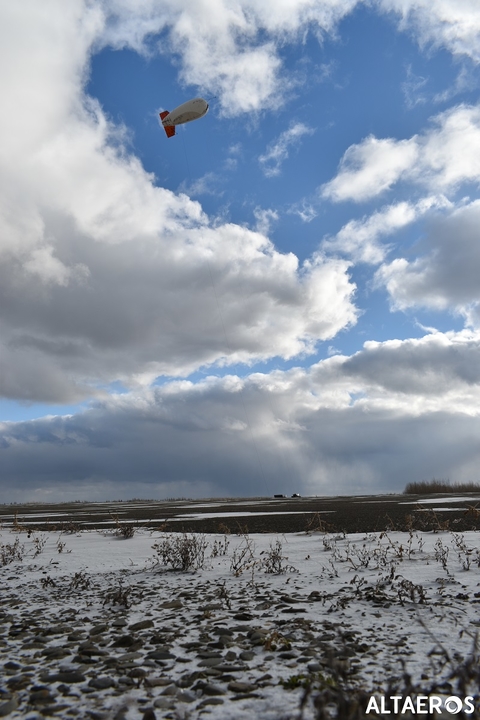A Boston-based startup has been working with Ericsson to demonstrate a new “SuperTower” that could help provide LTE coverage in remote rural areas using tethered aerostats—basically industrial versions of blimps.
Altaeros, which was founded in 2010 at the Massachusetts Institute of Technology, developed the technology that was used in an LTE deployment in rural Maine last year. After years of working to perfect the technology, Altaeros CEO and CTO Ben Glass said it was gratifying to see it delivering streaming video at broadband speeds.
The deployment involved a multisector LTE base station on what they're calling a SuperTower. Glass said rural markets like Maine are ideal for operators to deploy the SuperTowers, which float at heights up to eight times higher than the typical cell tower. They can also be used for temporary disaster relief or for special events.
RELATED: Loon gets OK to help provide emergency cell service in Puerto Rico
Technically, the SuperTowers are tethered aerostats; aerostat technology has been around for decades and the government has used it in military applications. But Altaeros started looking at it from the perspective of telecom use cases in early 2015 and created some modern design and control aspects to develop a commercial use case.
Glass said his company has been working with Ericsson for much of last year both on the demonstration of the SuperTower and an exploration into how it can benefit a number of Ericsson’s customers looking for solutions in rural parts of the country.
It’s focused on the main LTE spectrum bands but not one in particular; it can operate in pretty much any band, he said. “It really is kind of like a traditional macro tower,” Glass told FierceWirelessTech.

The offering uses Altaeros’ proprietary tethered aerostat design and automation technology as a platform for Ericsson’s new 5G-ready multistandard 52 series baseband and high-performance radio system with MIMO-capable radios.
“The SuperTowers are an innovative way to allow operators to offer high-speed broadband to underserved rural areas via next-generation LTE technology,” said Amy McCune, head of Customer Unit Regional Carriers for Ericsson North America, in a press release. “The platform also establishes the groundwork for them to evolve their rural networks to 5G in the future.”
They’re also designed to withstand almost any weather conditions, including small hurricanes. The system is designed such that it will monitor the weather conditions and if there’s an extreme event that proves too much it will automatically bring itself down and then resume service when the event is over.
The distance it covers is somewhat dependent on the terrain but if it’s a large open rural area, it can cover up to about 10,000 square kilometers, Glass said.
The SuperTowers will be available to operators in late 2018, the company said.

